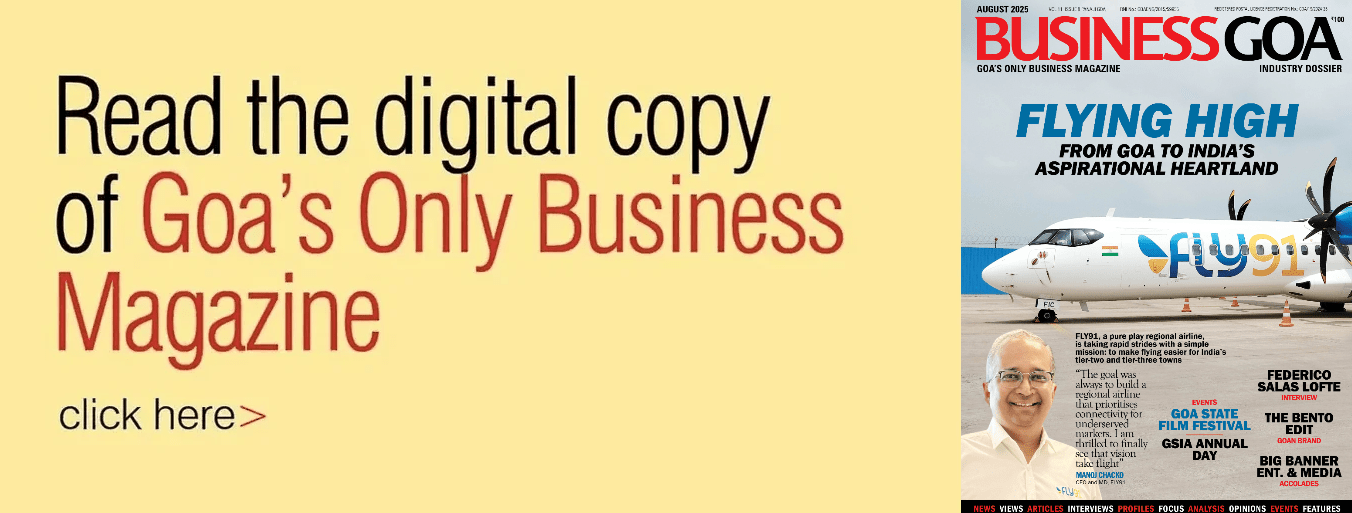
Dr. Pradeep Salgaonkar speaks about the rationale behind the way consumers behave especially in extraordinary situations such as pandemics and lockdowns.
We have in marketing various buyer behaviours and how consumers react in response to certain products or happenings around them and the product life cycles these products follow. For instance, the Fad, Fashion and Style are the three categories of products towards which consumers behave in very different manner.
Fad refers to a craze in the fashion industry that attracts large crowds but fades away quickly. The graph of fad is very sharp. It gets introduced, it sees a very quick rise and then equally fast decline and phasing out from the market. A classic example of successful fads in business is that of Pet Rocks.
Pet Rock is a collectible toy that was marketed by Gary Dhal, an advertising executive in 1975. Pet Rocks are natural stones picked up from Mexico’s Rosarito Beach, smoothened and marketed like live pets, in custom cardboard boxes, complete with straw and breathing holes. This fad lasted for about six months, seeing a sharp increase in sales during the Christmas season of December 1975. By February 1976, sales declined and the product was discounted. Gary Dahl managed to sell over 1 million Pet Rocks,each for four dollars,becoming a millionaire.
Fad is very short lasting. Its graph is very narrow, sharp and skewed. Whenever a fad comes up in market it is quickly adopted by a particular segment of people and equally fast and rapidly the fad is forgotten by these people. The other examples of successful fad products would be Fidget spinner, Yo-Yo, Pokémon, Rubik cubes, hula hoop etc. A fad product usually doesn’t have much utility. And that is the reason why the sales start declining after the initial rush, due to decline in the fascination associated with the product. Normally, consumers who purchase fad products engage in variety-seeking buying behavior. They are experimenters and try out all possible new products in the market.
A fashion has a comparatively longer product life cycle. However once they reach their highest sales, the fashion products experience a steep decline.
On the other hand, a style is something that is adopted by a particular sub-culture or younger demographic group for a comparatively longer period of time, till the style gradually phases out. A very common example among youth of India in recent times is the growing of beard and hair style trying to imitate Virat Kohli.
One thing that is common in these three cases is that their adoptions are driven by herd behaviour and collective actions. It is the demonstration effect which makes others adopt fads, fashion and style impulsively, or trigger stock market movements, or cause banking panics among larger segments of the market.
Similarly, it is herd behaviour of consumers observed in a situation of pandemic like COVID 19, that results in panic buying leading to genuine shortages of essential goods and certain specific products like hand sanitizers, face masks, soaps and toilet paper, regardless of whether the risk of a shortage is real or perceived. And most of the times it is perceived risk of shortages that leads to people buying impulsively in large quantities and hoarding stuff at homes leading to actual shortages and store shelves going empty.
This phenomenon is referred to as self-fulfilling prophecy by researchers.Self-fulfilling prophecyis a socio-psychological phenomenon wherein someone is ‘predicting’ or ‘expecting’ something, and this ‘prediction’ or ‘expectation’ normally comes true,simply because one believes it will happen, and due to this belief, they start behaving in that direction, and thus, their resulting behaviors align to fulfill those beliefs, which otherwise would have not happened. That is peoples’ beliefs influence their actions. The ‘predictions’ or ‘expectations’ are normally made by people based on their previous knowledge about that particular subject or event.
The first person to mention about this phenomenon was American sociologist William Isaac Thomas. In 1928 he developed the ‘Thomas theorem’ or better known as ‘Thomas dictum’, stating, “If men define situations as real, they are real in their consequences.” Later on building on Thomas’s idea, Robert K. Merton, another American Sociologist, coined the term ‘Self-Fulfilling Prophecy’ thereby popularizing the thought “a belief or expectation, correct or incorrect, could bring about a desired or expected outcome.”
Robert K. Merton in his book ‘Social Theory and Social Structure’, cites an example of a bank run wherein, a number of people falsely believe that the bank was going to file for bankruptcy and this in turn actually leads to the bank’s collapse. Someone somewhere must have started a rumor which created a fear among the investors and because of this false fear, many people decide to withdraw their entire deposits, one after the other, leading to herd behavior whereby almost all people line up to withdraw their deposits. These actions by depositors indeed cause the bank to go bankrupt because it actually loses its deposits and is left with nothing but to file for bankruptcy. In Robert K. Merton’s words, “The prophecy of collapse led to its own fulfillment.”
Most of the times, in case of situations affecting the general society, such as in COVID 19, an individual’s belief makes them speak out their beliefs to other people, thereby creating rumors, which spread like wild fire, more so with present day tools like social media in action. And as a result many people start believing in similar fashion, in this case mostly negative predictions or expectations, such as stock out, long periods of shortages, disproportionate price rises, pandemic spreading very fastetc.
The result being all people, due to fear of unknown, start acting in that direction, purchasing disproportionately huge quantities of goods, spreading further rumors, spreading further fear, thereby actually worsening the situation which otherwise could have not caused any damage or shortages. Thus it can be said that “The prophecy of stock out and shortages has led to its own fulfillment.”
Yet another explanation is the concept of individualism and self-preservation versus collective interest. We have an innate tendency to make exceptions for ourselves when it comes to certain specific purchases or requirements.
We know that buying more than what is required is the real reason for shortages. But when finally we as individuals see goods displayed on the shelf for the first time in a week, we are most likely to buy more than what we need because we are worried about when the stocks will be available next, and we are most unlikely to put our own and our family’s needs behind that of the community. For example during the initial days of lockdown, goods like biscuits and toast were a big scarcity.
Atta went missing from the stores for a pretty long period. It’s ideal to have a truly collectivist society whereby everyone would behave and purchase only what is needed, leaving sufficient for others to buy. But that’s only a wish. The society will always remain largely an individualistic society dominated by self-preservation behavior.
Conclusion
Fad, fashion and style is largely based upon herd behaviour; what the majority adopts is taken as the most wanted and fashionable. The same trend was seen in the panic buying during situations such as the lockdown following Covid-19. The self-fulfilling prophecy tells us how something that is predicted will fulfill itself, and this is clearly seen in the lockdown; when it was prophesized that stores would run out of stocks, they did indeed run out of it. Individualism and self-preservation often come before collective interest, and we see that a person would buy more than required, if they thought that in future its shortage would cause them problems.
They don’t really think about the rest of the public when making such purchases. Thus, the above three theories postulate that consumer behaviour is very complex & dynamic and difficult to predict in this VUCA world, though marketers have to continuously garner newer ammo to face the challenges





